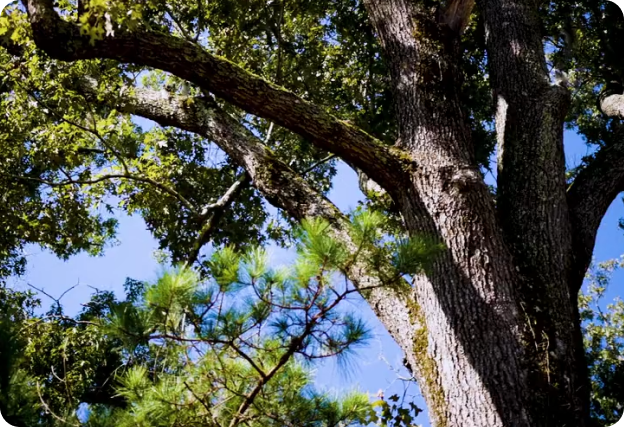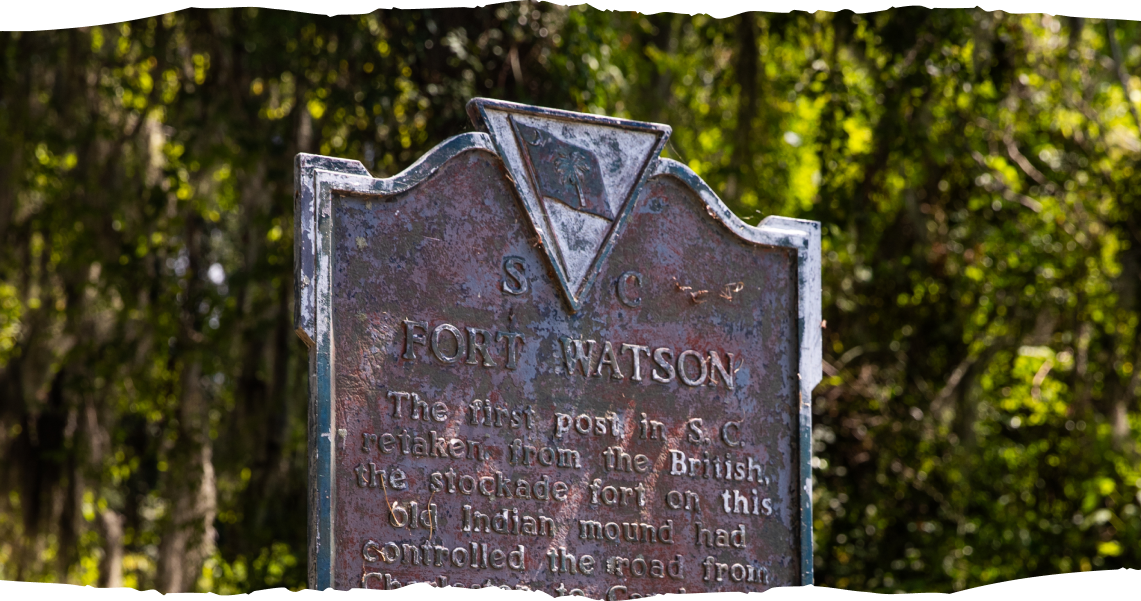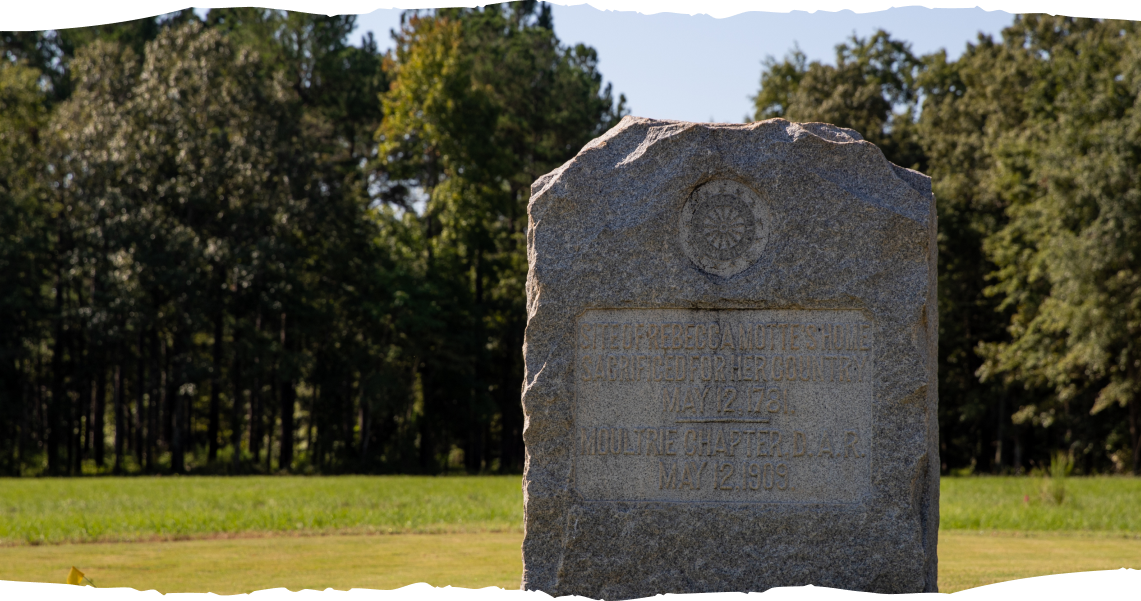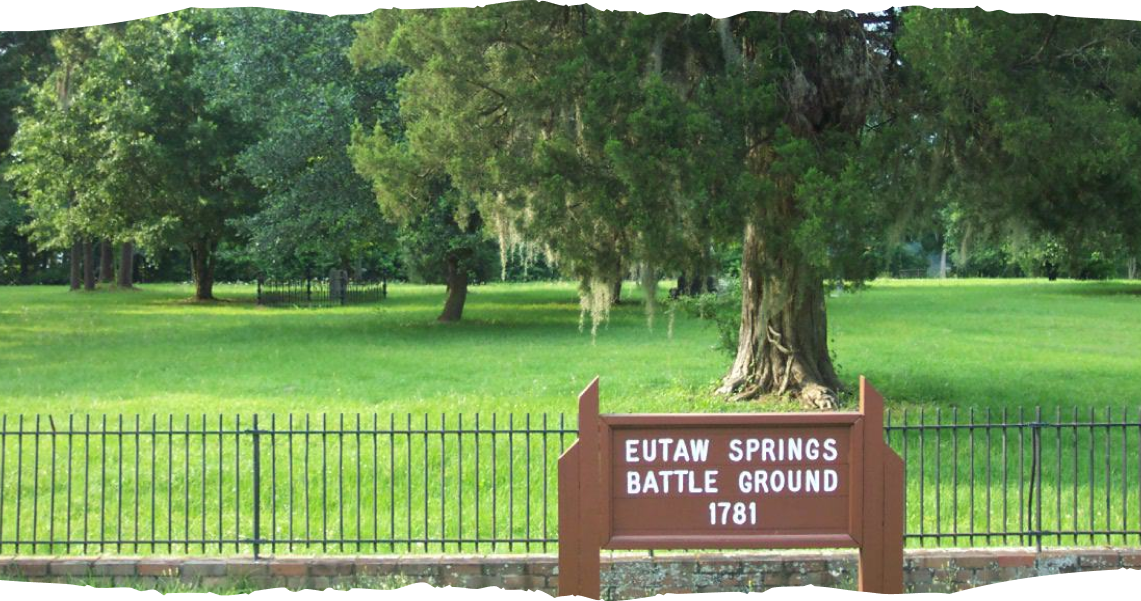FAMOUS Battle Sites
IN SANTEE COOPER COUNTRY

Have time for a quick history lesson?
We always do! If there’s one thing we love about Santee Cooper Country, it’s the captivating historic experiences the region has to offer. If you’re a fan of combat films and action packed adventure, then check out three of our most famous battle sites that turned the tides of the American Revolutionary War.

The Battle of Fort Watson

In late 1780 or early 1781, British Lt. Colonel John Watson ordered the construction of Fort Watson to guard the supply route between Charleston and Camden. Built on an old Santee Indian mound and surrounded by rows of sharpened logs, the fort was designed to repel attackers. Despite a failed attempt by American General Thomas Sumter to capture Fort Watson in February 1781, the British remained.
That April, American forces under Lt. Colonel Henry Lee and Brigadier General Francis Marion used Fort Watson as a strategy to interfere with British supply lines. The Americans built a siege tower taller than the fort’s walls, allowing sharpshooters to fire into the defenses. After six long days, the Americans unleashed musket fire on the British. Unable to survive the attack, the British surrendered the fort on April 23, 1781. This victory gave the Americans much-needed supplies and weakened British control in South Carolina.
This site highlights American ingenuity and showcases the resourcefulness of leaders like Lee and Marion. Visiting allows history lovers to connect with the battle and the strategies that led to victory.
The Battle of Fort Motte


Another infamous victory over the British was made possible by devoted patriot, Rebecca Motte. Her home, Mount Joseph Plantation, became a crucial part of American survival. In 1781, the British captured the plantation, turning it into a supply hub we now know as Fort Motte. The British forces fortified the mansion, which became a target for American forces under Major General Nathanael Greene, Brigadier General Francis Marion, and Lt. Colonel Henry Lee. Their forces surrounded the fort in May 1781, with support from fellow South Carolinians and soldiers.
The British refused to surrender, but their time ran out. Marion and Lee asked Motte for her permission to burn Mount Joseph Plantation to the ground–forcing the British out. She agreed and the Americans set the roof on fire. This forced the British to surrender, and marked a critical step in dismantling British control in South Carolina.
Motte’s sacrifice for the American cause was one of many important civilian sacrifices during the war. Today, although the plantation is lost to time, the historical significance remains as a symbol of the Americans’ efforts.

The Battle of Eutaw Springs

The Battle of Eutaw Springs marked a pivotal point in the American Revolutionary War. On September 8, 1781, after enduring four grueling hours of intense combat in the unending heat, more than 4,000 American and British soldiers fought relentlessly for control of the battlefield. The American forces pressed forward to weaken British control in South Carolina. Finally, the British retreated from the field, severely weakened and unable to beat the American forces. Their departure set the stage for the momentous British surrender at Yorktown just five weeks later, signaling the conclusion of the war.
As a key battle in the Southern Campaign, Eutaw Springs hurt British forces prior to their surrender. Now, guests come to pay their respects to lives lost and view this memorial of American independence.
The Siege of Orangeburg


In what is now Orangeburg County, several notable Revolutionary War battles and skirmishes were fought. On May 11, 1781, The Siege of Orangeburg began. Patriot General Thomas Sumter with 350 men and a six pounder cannon successfully defeated a British force of 89 soldiers without a fight. Captain John Henry Felder, an Orangeburg merchant, manufactured gunpowder for the Revolutionary War, was a militia captain during the war, and had five sons in his company, He was killed during the Siege of Orangeburg. A film entitled “All for Liberty” was created because of his personal sacrifice.
Skirmishes between Patriot forces led by Generals Thomas Sumter and Francis Marion, The Swamp Fox, and British forces enforced by local Tories/Loyalists in Orangeburg County are numerous. They include the sites Rowe’s Plantation, Turkey Hill, Bull Creek Swamp and Manigault’s Ferry.
These historic landmarks are vital pieces of South Carolinian and American history.
Each battle pushed the American forces forward during the Revolutionary War and is still widely remembered in Santee Cooper Country.
